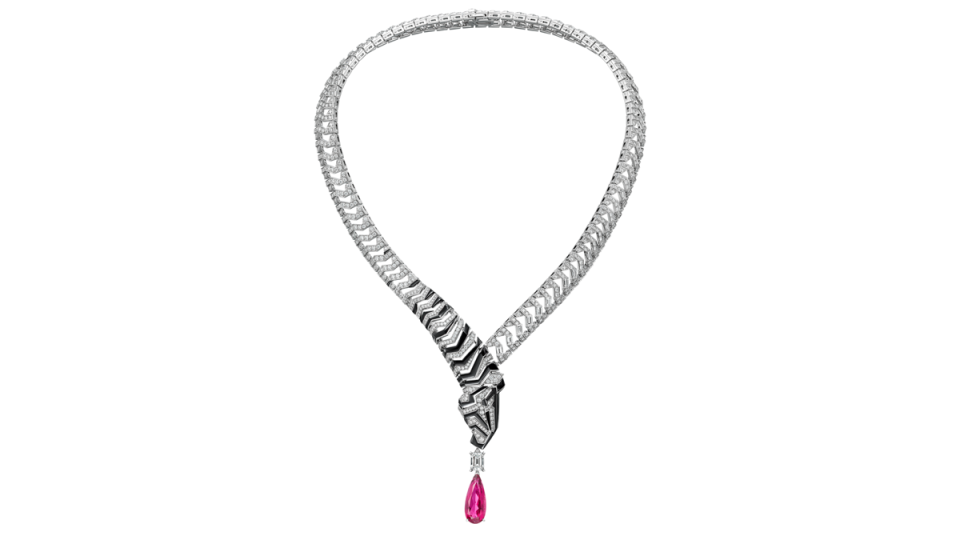From Sofia Coppola to Elle Fanning: Behind-the-Scenes at Cartier’s Star-Studded High Jewelry Reveal in Vienna

When Cartier hand-delivered an invitation for a formal Viennese ball, the answer was obviously, yes. The house hosted VIP clients and press from around the world in Vienna last week for the unveiling of its lavish Nature Sauvage high jewelry collection. One minute it felt like we’d stepped back time watching dozens dance a Viennese waltz (white gloves, tails and all) alongside the symphony orchestra in a grand ballroom, while moments later the sultry young English singer Raye performed in a staged nightclub.

That juxtaposition was reflected in the jewelry, which put a spotlight on the house’s iconic animals but in distinctly contemporary, playful new ways. “We wanted to express the soul of the animal,” says Jacqueline Karachi, director of high jewelry creation. “We considered the facial expressions, the way the body moves, and imagined the animals in different ways.” Those included a striking diamond encrusted panther with sapphire spots, which stretched across the top of the hand in an innovative connected bracelet and ring design, to subtle animal print references in a contouring black onyx and diamond collar with a 6.25 carat juicy pink rubellite drop.
More from Robb Report
Chicago's Leading Rolex Dealer Just Opened a 20,000-Square-Foot Megastore. Here's a Look Inside.
You Can Now Buy and Sell Luxury Watches and Jewelry on eBay's Consignment Service

For true collectors, the reveal of Cartier’s high jewelry is akin to a highly anticipated artist’s show. Some might say even better because you can wear the jewelry on the town or at the ball! The house’s creative team spent more than two years searching for rare stones (like a 22-carat dreamy antique Ceylon sapphire), designing and crafting the 87 one-of-a-kind pieces. There’s always a degree of subtle competition among clients for the pieces because once it’s sold, it’s gone. In recent years, Cartier has gathered its best clients in Madrid, Lake Como, and Florence for the unveiling of its high jewelry, each experience designed to showcase the house’s link to the region’s culture and heritage.
The house created a fairytale setting for the debut of Nature Sauvage, a place where guests could forget about the outside world for a few days and live in Cartier’s world. The two-day affair kicked off at the Grand Hall of the Austrian National Library, built in 1723 and housing over 200,000 volumes from the years 1501 to 1850, which is considered one of the world’s most beautiful libraries. Here, Cartier hosted a private concert of Viennese classical music followed by dinner at the charming Café Gerstner, another of the city’s treasured spots since 1847.

Cartier created individualized itineraries for its guests, with activities including private museum tours and visits to the nearby Austrian vineyards to walking tours that explored the city’s café culture.
It was all part of the lead up to the big reveal: Cartier’s high jewelry. The collection was presented at the Kursalon Hübner, a Renaissance-style pavilion built in the mid-19th century when Emperor Franz Joseph I transformed the area into a public park and recreation space. The vitrines sparkled with megawatt animal jewels and timepieces, a theme which dates to the 1860s, when Cartier’s animal motif brooches were the house’s bestsellers. But its most famous and seductive is, no doubt, the Panthère, which first appeared in 1914 as spots on a wristwatch and since morphed into sly, playful, and decadent jewels.

The Panthère motif played a starring role in the collection appearing sly, playful, or discreet in colorful jewels and timepieces. A jeweled panther glides across a large landscape agate brooch, which appeared like a sunset in the Sahara. Another diamond panther brooch was designed to stretch over the shoulder while clutching a big sapphire drop in its paws. The menagerie included a carved green jasper crocodile cuff, lapis lazuli bird pendant, diamond feather earrings, and large graphic rings.

A standout was the Amphista necklace, which is comprised of a set of matching jeweled serpents coiled around the neck surrounding a graphic form with nine Colombian emeralds. “We generally use these stones in more classical designs,” explained Karachi. “But here we choose to imagine the emeralds in an architectural skyscraper with two serpents, which gives the animals theme a sense of modernity.”

That evening Cartier took over the Kunsthistorisches Museum, the palatial world-class museum with works by the great masters— Titan, Raphael, Tintoretto, Rubens, and more—where both the Vienna Boys’ Choir and DJ Gillian Sagansky delivered the entertainment, another contrast of the classical and contemporary.

After a day of touring Vienna’s highlights in art, culture and cuisine, it was time for the grand event, the Viennese Ball. Guests, including celebrities Elle Fanning, Sofia Coppola, and Franz Rogowski, gathered at the MAK, a museum fittingly known for combining the past with the future in applied arts, design, and contemporary art.

The evening began with a runway show featuring a parade of models wearing specially designed gowns by Jonathan Ailwood and the colorful jewels. Here’s where Cartier’s artistry and savoir-faire comes to life: The coiled panthers and snakes, draping diamond collars, and dripping jeweled earrings contoured the body almost like a second skin, and despite their weight in metal and gems, there was lightness to their style.

As the invitation promised, it was a true Viennese ball echoing another era. The Waltz Debutantes danced to the Vienna Symphony Orchestra and operatic tenor Fabio Sartori entertained guests between the dinner courses prepared by Michelin-starred chef Juan Amador. But the highlight was the jewels, delivering a tangible sparkle and shine. What’s a grand ball without diamonds and jewels?
Best of Robb Report
Sign up for Robb Report's Newsletter. For the latest news, follow us on Facebook, Twitter, and Instagram.


